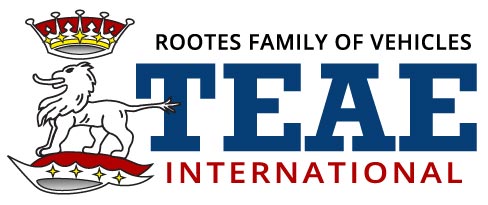Silence from the teae board it seems. After a couple of leads on British classic gearbox rebuilders, I decided to take everything apart and start again.
Happy to report that not only is the gearbox completed and happily bench-shifting through the gears, but it’s back mounted to the engine, complete with new clutch and throwout bearing from Victoria British and new gaskets, etc from Sunbeam Specialties (SS). Rick at SS was able to supply the breakage-prone shift detent springs and the many roller bearings (81 in total) required on the first series Alpine and Series IIIa/b/c Hillman MInx gearboxes – of which I am part.
What I did differently the second time:
– the awkward layshaft installation is made much easier by making the dummy shaft (3/4" rod, cut to length) only long enough to sit flush with the retention ring at the front of the shaft and just inside the thrust washer at the rear. This allows the unit to stay together and still slide between the fixed thrust washers that stay with the case.
– I had previously made the dummy shaft a hair too long and this was binding up inside the box, making final repositioning an absolute bear since it was bound up against the fixed thrust washers. If you don’t have idea what I’m talking about, it’s best you look at a different thread. 😕
– the mainshaft HAS to be fully home on the rear bearing, or the synchros and clusters won’t engage correctly. This required me to have my son supply some extra hands to support the gearbox as I placed it on a 1 1/4" pipe nipple (to bear onto the center race of the bearing) while the rest of the mainshaft went down into a bench grinder stand. I needed something sturdy for this next step….
– while the box is held, and you have already entered the mainshaft into the front of the box while sliding the 1st/2nd gear cluster onto the shaft, the box is inverted onto the pipe nipple (or some cylinder of steel) and the mainshaft is then tapped home using a heavy socket (I think a 15/16" worked best) to protect the spigot tip. If you try to do this without inversion against a firm surface (LIKE I HAD DONE PREVIOUSLY), the rear bearing will simply slide out of the box and you’ll be playing see-saw as you tap back and forth guessing if the bearing is fully home on the shaft.
– the Service Manual shows the use of an arbor press or similar. i don’t have one nor do I plan on buying one soon…..
– then the input shaft (stemwheel) can now have its 27 needle rollers installed – use thick axle grease to keep them in place – and the assembly is then tapped into the box and simultaneously onto the spigot of the mainshaft. Double check that the rear bearing hasn’t slid rearward – it likely has. With the stemwheel (front cover assembly) fully home, secure the four bolts and then tap the rear bearing gently back into the box so that the circlip is flush. Then the rear cover (snout) can be reinstalled which has a recess to ensure the rear bearing stays put.
– the Service Manual does an excellent job of listing all these steps, it simply makes the assumption that the reader has done this before……
– the tricky part is sending the selector fork shafts (3) back home through the forks and securely into the case. Make sure the front end of your dummy shafts are tapered or you’ll NEVER get the ball to stay against its spring in the chamber. Trust me. Then as you tap the selector shafts back into the case – all entering from the rear, keep the forward end of the selector shaft really close against the dummy shafts as you tap – if you leave too much of a gap you’ll let the ball escape and have to start again. Tricky this was.
– lots of grease as you reassemble – especially to hold the two synchro rings and critical to hold the 81 rollers (3 x 27) in their recesses.
– top cover on and then relax with a cool beverage. Mine today was a Leinenkugel’s "Grapefruit Shandy", perfect for summer garage temperatures.
Getting the trans back onto the engine was straightforward – grease the splines and the spigot tip a bit, jostle the trans to get the alignment just right and send it home. An engine hoist and a tow-hook strap (or similar) wrapped around the gearbox portion makes this much, much easier.
Unlikely I’ll be back on the road this summer – but enjoying the nice pace and discoveries made on this restoration. These are really great cars.
David
I hope this helps!


